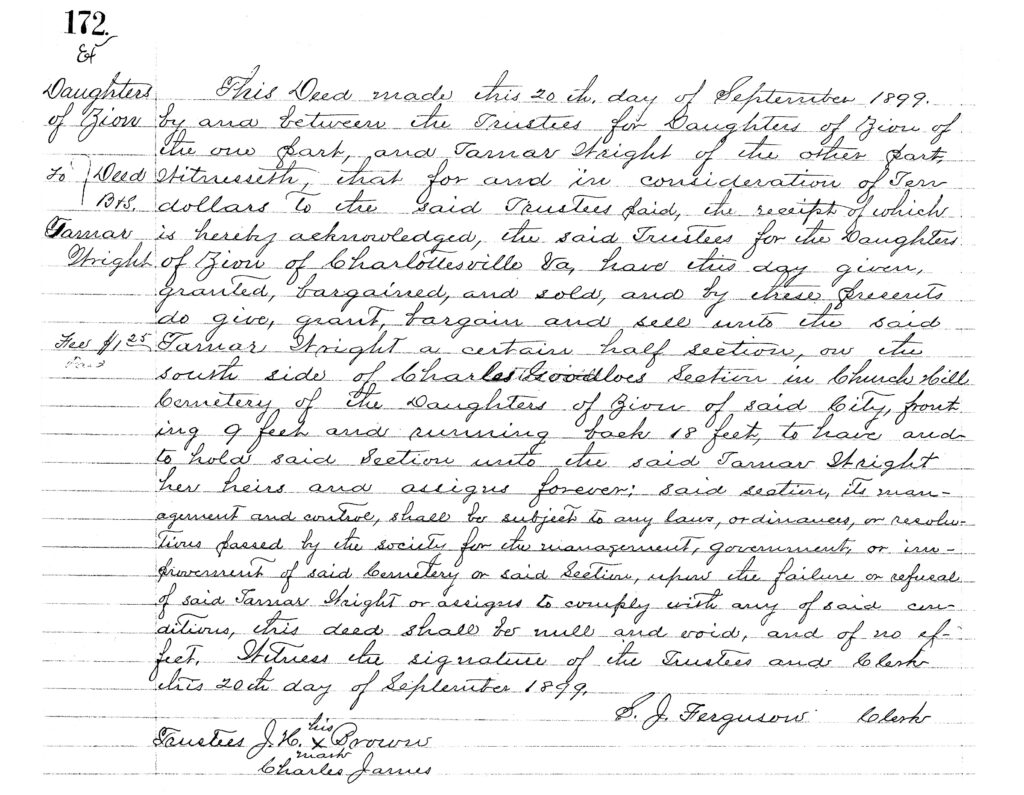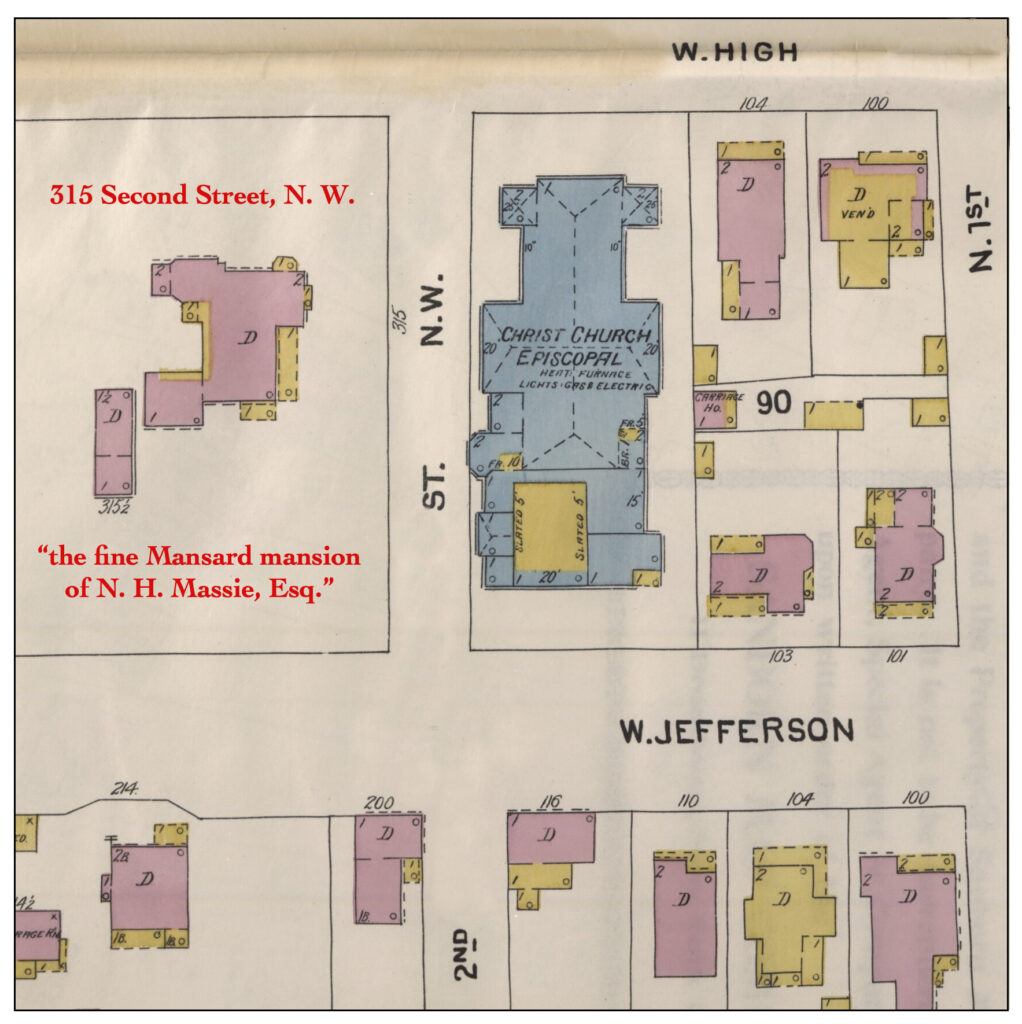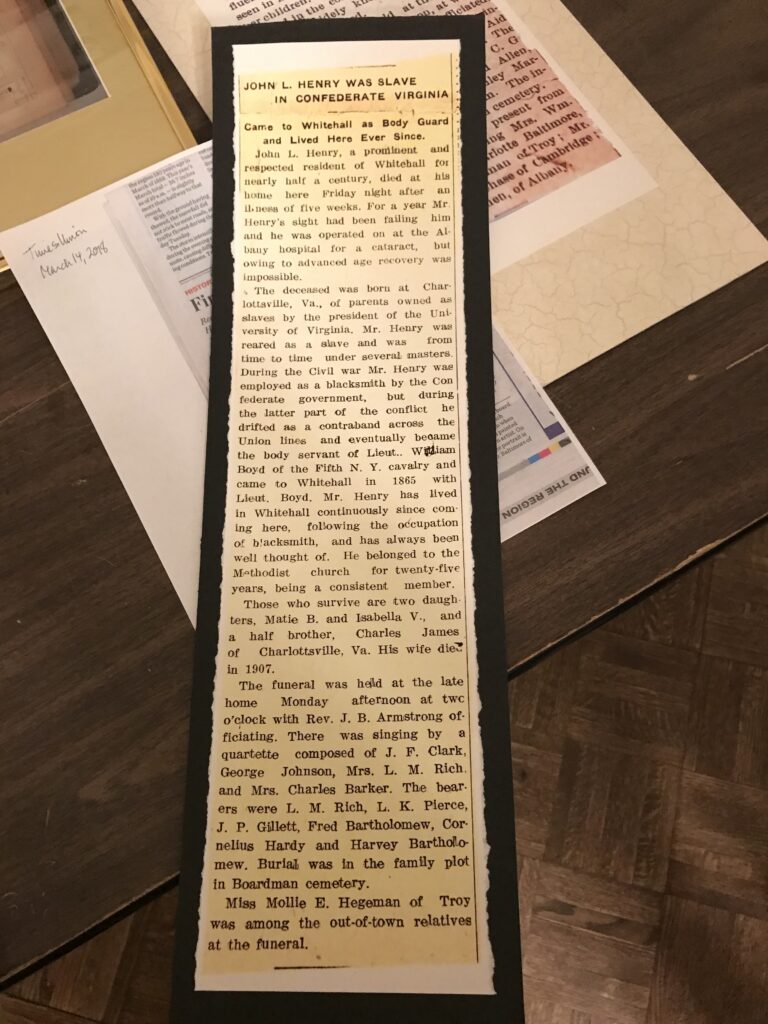Name: James, Charles
Occupation: Museum Attendant, Janitor
aka:
Sex: M
Birth: Apr 1826
Death: 19 Feb 1915
Marker: No
Spouse(s): Eliza Ragland, Julia Carey
Parents: Julia (Judy) Henry
Children: Charles Veskiger James, Mildred James, Malina James Wood, Mattie James Summers
Affiliations: Trustee, Daughters of Zion Society; Trustee, Good Samaritans and Daughters of Samaria
Notes:

Image courtesy of The Vinegar Hill Project
A 1907 Chancery case reveals that on January 1, 1883, Messrs. Jesse Cary, Robert Goins and Charles James, Trustees for the Daughters of Zion Society, conveyed a one-half interest in their property known as Zion Hall to Messrs. Charles James, Robert Goins and Robert Maury, Trustees for the Good Samaritans and Daughters of Samaria, and Messrs. James Ferguson, Lewis Dyer and John L. Hayes, Trustees for the Victoria Tabernacle.

Excerpt from:
1907 Chancery Case
Chancery Records Index
Library of Virginia
Charles James was also named as Trustee for the Daughters of Zion in the deed below from September 1899, one of only two surviving records of cemetery plots sold at the Daughters of Zion Cemetery.

Little is known about the life of Charles James before Emancipation beyond the fact that he and Eliza Ragland, his first wife, had a son named Charles Veskiger James, born in Keswick, Virginia, in 1856.
By 1870 Charles James had gained employment as a domestic servant in the household of a prominent Charlottesville attorney, Nathaniel Hardin Massie.
Charles James married Julia Carey, his second wife, in 1879, with Reverend Jesse Herndon, pastor of Mt. Zion Baptist Church, performing the ceremony. Judy Henry was listed on the marriage record as the mother of Charles and Julia’s parents were listed as Coleman and Mildred Carey.
Charles James was still employed by N. H. Massie in 1880. Both Charles and his wife Julia were listed as servants in the Massie house at 16 Hill Street in downtown Charlottesville. Hill Street is now Second Street NW, and the Massie house, now no longer standing, was described by James Alexander in his Recollections as a “fine Mansard mansion” on “the lot west of the Episcopal church.” That is the block now occupied by McGuffey Park.

Sanborn Map Company, 1907

University of Virginia Visual History Collection
Courtesy of Special Collections Library, University of Virginia (Charlottesville, Virginia)
The 1900 U. S. Census listed the occupation of Charles James as “Museum Attendant” but didn’t list the name of the museum. Two museums operating in the Charlottesville area in 1900 were Monticello, on the mountain about five miles outside of town, and the Lewis Brooks Hall of Natural Science at the University of Virginia, in the building now known simply as Brooks Hall. UVA Professor Jeffrey L. Hantman noted in his history of Brooks Hall: “The museum officially opened on June 27, 1878, and by August of the same year the Board of Visitors noted there were so many visitors that a janitor was needed.” From 1902 to 1906 the Charlottesville City Directory listed the occupation of Charles James as “Janitor.” Perhaps he worked at the museum as both attendant and janitor. It is hoped that further research will reveal more about the museum at which Mr. James worked as an attendant.

Image dated 1900, University of Virginia Visual History Collection
Courtesy of Special Collections Library, University of Virginia (Charlottesville, Virginia)
By 1902 Charles and Julia James were living with their three daughters, Mildred, Lena, and Mattie, on 6½ Street SW in the Fifeville neighborhood of Charlottesville, where they resided until Charles died in 1915.
In 2018 Dr. Shelley Murphy, Director of the Albemarle Charlottesville Historical Society, visited the Rensselaer County Historical Society in New York and discovered a remarkable Charlottesville connection in their exhibit. It was an obituary from 1911 for John L. Henry who had lived in Whitehall, New York, since 1865 but was “born at Charlottesville, Va., of parents owned as slaves by the president of the University of Virginia.” Listed among his survivors was “a half brother, Charles James of Charlottesville, Va.” Further research has revealed that the Charles James mentioned in that obituary was in fact Charles James, Trustee for the Daughters of Zion Society.

Charles James and his younger half-brother John Lewis Henry were sons of Julia (Judy) Henry. They had different fathers and were born thirteen years apart, in 1826 and 1839, but shared family ties in Charlottesville. The mention of Charles James in his brother John’s obituary suggests that they kept in touch over the years even though Charles stayed in Charlottesville and John moved to Whitehall, New York, in 1865 and lived there for the rest of his life.
Further details of the family history of Julia Henry and her sons come from a surprising source—John Henry: a Folk-lore Study, a book published in 1933 by West Virginia University English professor and folklorist Louis W. Chappell. Having found evidence that the traditional “John Henry” ballad was based on an incident which occurred at the Big Bend Tunnel during its construction in 1870-1872, Chappell spent years tracking down and interviewing people who had been there. In 1929 Chappell read about a man named Jeff Washington who claimed that in 1868 at the age of 18 he had gone to work for the C and O Railroad along with a friend a few years older named John Henry who lived in Keswick just east of Charlottesville.
In his book Chappell wrote about searching for families by the name of Henry in the Charlottesville area and discovering a “family with two, father and son, who were slaves of Professor John Staige Davis, of the University of Virginia” who would have been the right age, “fifty-five and thirty-one respectively when the road was begun in 1870.”
In August of 1929 Louis Chappell visited Keswick, Virginia, to interview the half-nephew of John Lewis Henry. In that interview Charles Veskiger James, son of Charles James and Eliza Ragland, told Chappell:
“Uncle was named John Henry after his father who was John Henry. His mother was named Judy Henry. She had one son named Charles James, and he was my father, and then she married John Henry and had a son John Henry. Uncle John Henry was bound to Professor Davis in the University of Virginia, and his mother was too.
“Uncle worked on the C and O Railroad, and I did too, when they were building it, a long time before he went to Whitehall. He was at Big Bend tunnel, but he won’t the great steel-driver there. That John Henry got killed. I didn’t see him when I was there, but Dick Morris and Noah Reasby did. They said that John Henry was a great steel-driver at Big Bend, and talked about him as long as they lived. They both died about ten years ago here near Keswick.”

Intrigued by what he had learned from Charles Veskiger James in Keswick, over the next year Chappell continued to collect information about John Henry of Whitehall. He wrote to H. E. Sullivan of the Historical Society of Whitehall who interviewed John Henry’s daughters. They told him that their father John Lewis Henry was born to John and Judy “in east room of U. Va. Aug. 15, 1839” and they shared many other details, including family birth and death dates, which are included in Chappell’s book. Chappell himself finally visited Whitehall and interviewed the daughters and other people there, gathering more and more details about John Lewis Henry’s life for his book.
The most recent and perhaps most remarkable chapter in this story began just a few years ago when Clifford Oliver Mealy, a photographer from Greenwich, New York, discovered the Henry family photograph album at the Whitehall Historical Society. The album, containing 96 photographs dating back to the 1870s, includes a family portrait of John Henry with his wife Emma Baltimore Henry in their parlor with their children and a photograph of John Henry standing in front of his Whitehall blacksmith shop with his tools in his hands.
Inspired by the photographs, Mr. Mealy has researched, written, and lectured about the Henry family and their photograph album and about the family of John Henry’s wife Emma, the Baltimore family of Troy, New York. His lecture last fall at Grant Cottage Historic Site was recorded and can be viewed below. Twenty-four digitized photographs from the Henry family’s 19th century photograph album can be viewed on the Grant Cottage website.
